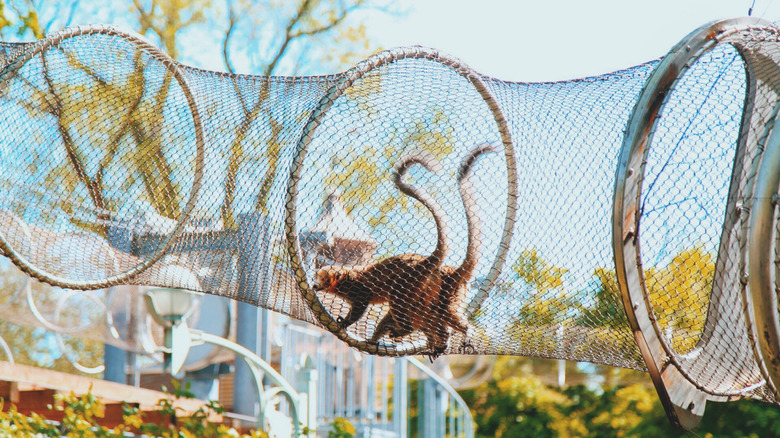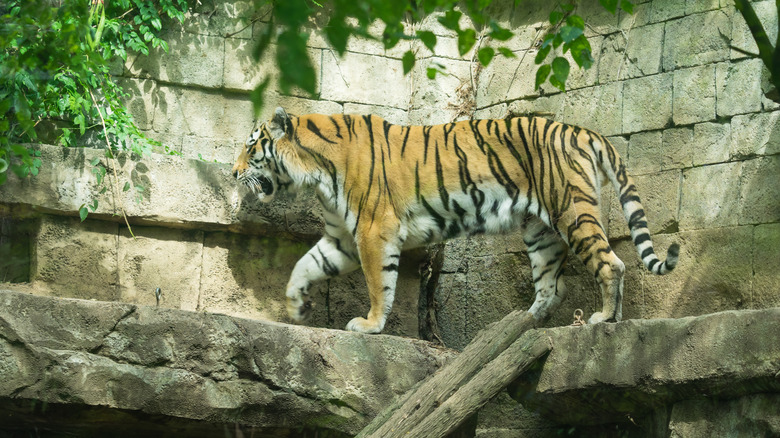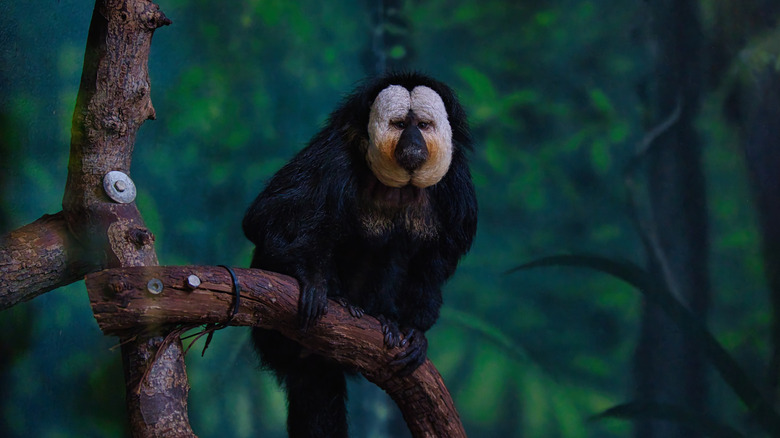America's Oldest Zoo Is A Pennsylvania Gem With Incredible Innovation, Conservation, And A Victorian Garden
Historic Americana has its heart in Philadelphia, nesting in such significant places as Independence Hall (where the Declaration of Independence was signed) and more unexpected gems like America's oldest antiques district. Another one of the best things you can't skip on a vacation to Philadelphia is the Philadelphia Zoo, located in the sprawling Fairmount Park. Its charter dates back to 1859 — the oldest of any zoo in the U.S. It's where the country's first orangutan and chimpanzee births occurred, and today it houses over 1,900 animals, many of which are being protected from endangerment.
Though chartered in the 1850s, the Philadelphia Zoo's official opening was delayed 15 years because of the Civil War. The zoo's founders intended not only to showcase the exotic animals of other continents but also to bring America's own diverse animal life to this nook of the East Coast. Animals not commonly spotlit by zoos — buffalo, bears, prairie dogs — found acclaim here. In fact, when it opened, the zoo was the first in the world to have a prairie dog exhibit. Over time, it grew to encompass 42 acres, set among a Victorian-style garden landscape. The zoo also has exhibits dedicated to primates, big cats, birds, and rare animals, plus unique attractions like climbable wildlife sculptures and a themed carousel.
Arrive at the Philadelphia Zoo and see big cats roaming over your head
The Philadelphia Zoo is within a crescent-shaped enclave of Fairmount Park, about 30 minutes by transit from 30th Street Station or a 20-minute drive from the Philadelphia International Airport. There's paid parking available near the zoo's entrance, and daily hours are from 9:30 a.m. to 5 p.m. (last admission is at 4 p.m.). When you pass through the main entrance and head to the right, one of the first exhibitions you'll see is the Rare Animals Conservation Center. A testament to the zoo's role in conserving endangered and rare species, you can see golden lion tamarins and Rodrigues fruit bats here. The zoo also partakes in global breeding programs to protect endangered species.
Keep following the main path and you'll pass by the children's zoo, called KidZooU, where there's a barnyard petting zoo. From there, you'll reach the Big Cat Falls, one of the Philadelphia Zoo's most impressive highlights; expect to see lions, tigers, pumas, and leopards. You might notice some of these big cats even before reaching their main habitat. The zoo employs a clever system of overhead mesh tunnels called Zoo360 throughout the grounds, which allows the animals to ramble safely above the human pathways.
Observe protected primates and ride the express train at the Philadelphia Zoo
Across from Big Cat Falls is another main draw of the zoo: the PECO Primate Reserve. The zoo is deeply involved in primate conservation, and you'll see some of the world's most at-risk primates here, including gorillas, orangutans, and gibbons. The exhibit building is uniquely designed to resemble an abandoned sawmill, with naturalistic forest habitats and climbing structures to keep the animals engaged. Several other animal exhibit highlights include the neoclassical McNeil Avian Center, home to a diverse collection of tropical birds, and the reptile and amphibian house.
Moving along the path, there are a couple of attractions that are great for families. The carousel is a fun, rainforest-themed ride, and little ones can hop on the SEPTA PZ Express Train. Also on the property is the landmark Solitude mansion — the zoo's oldest building, once owned by William Penn's grandson. You can only explore the inside of the mansion on a special, private tour. On your way out, stop by the gift shop for a zoo souvenir. Then, if you want to grab dinner after, consider heading to Rittenhouse Square, a lush spot that's a boon for dining and shopping in the heart of the city.


